Rajasthan mandana, "Preparing Diwali at Lakshmi's home" — part 2
Drawing mandana is described as subhkarya ( an auspicious activity) and emphasises the idea of centre, symmetry and multiplication.
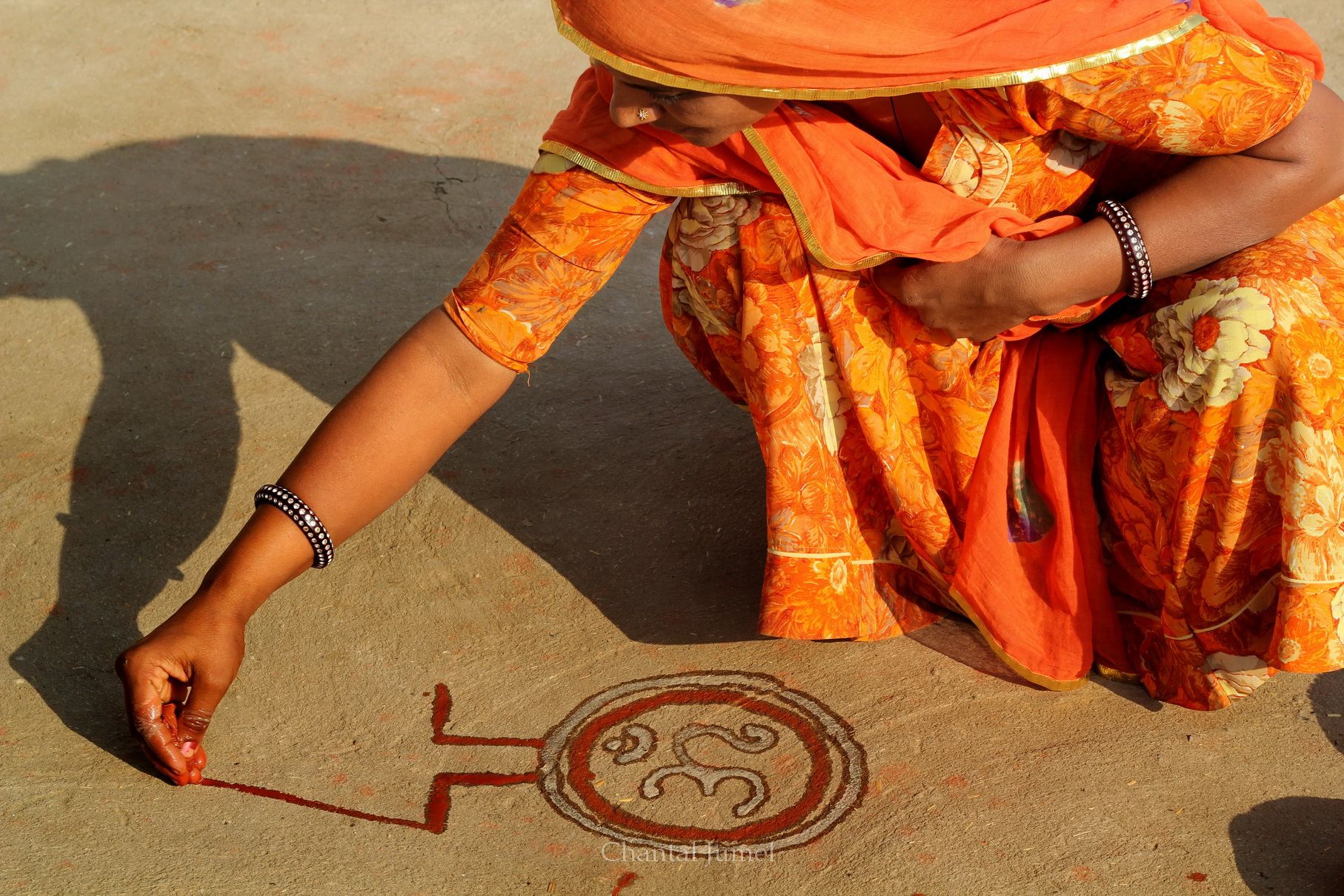
After a few kilometres, the city road swaps its black tar coat for the sandy dust of the Thar Desert. On either side, an arid landscape stretches as far as the eye can see, punctuated by the austere presence of caper bushes (ker) and various thorny shrubs, known for their pharmaceutical virtues. But the manna of the desert is called khedjri or sangri. The miracle tree unfolds its foliage in the shape of an umbrella and bears fine green pods, which look like beans. Once dried, they are mixed with other flat peas legumes called kumti to create panjkuta or a five-ingredient meal: "khedjri" or "sangri" (P. cineraria), "kumti" (Acacia senegal), "gunda" (Cordia mixa), "ker" (Capparis decidua) and "kachara" (Cucumis sp.) This precious dehydrated mixture, stored in bags, is a family essential and returns to its original form when soaked in water before cooked with spices.
The road turns into a pothole trail and the driver laughs at each swerve that slams me against the door of the jeep. In the monotony of the landscape, my gaze twice peruses herds of black and tawny spiral-horned antelopes. In the Mughal miniatures, these are the same antelopes listen to the heroine playing an instrument while waiting for her lover to come. The vision fades as a dusty cloud approaches and instantly narrows the track. Yet I can clearly make out the swinging cadence of the bells attached to the ravanhatta bow. A man appears, playing this rustic spiked fiddle made of half a coconut and two main strings, one of horsetail and the other of steel.
A colourful procession follows close behind, led by a dromedary hitched to a cart that holds women and children. The men are itinerant bards called Bhopa who once sang and danced the legend of Pabuji before a painted scroll. Today, many poet-musicians have adapted and sing in hotels or in forts as soon as swarms of tourists gather. The group gradually moves away, and we continue our journey until the driver stops in front of a house. I get out of the jeep and accompany him to a bountiful neem tree (Azadirachta indica) whose dense crown keeps two women sitting on a woven bed called charpoy cool. The younger one is my guide’s wife and the older one, his mother.
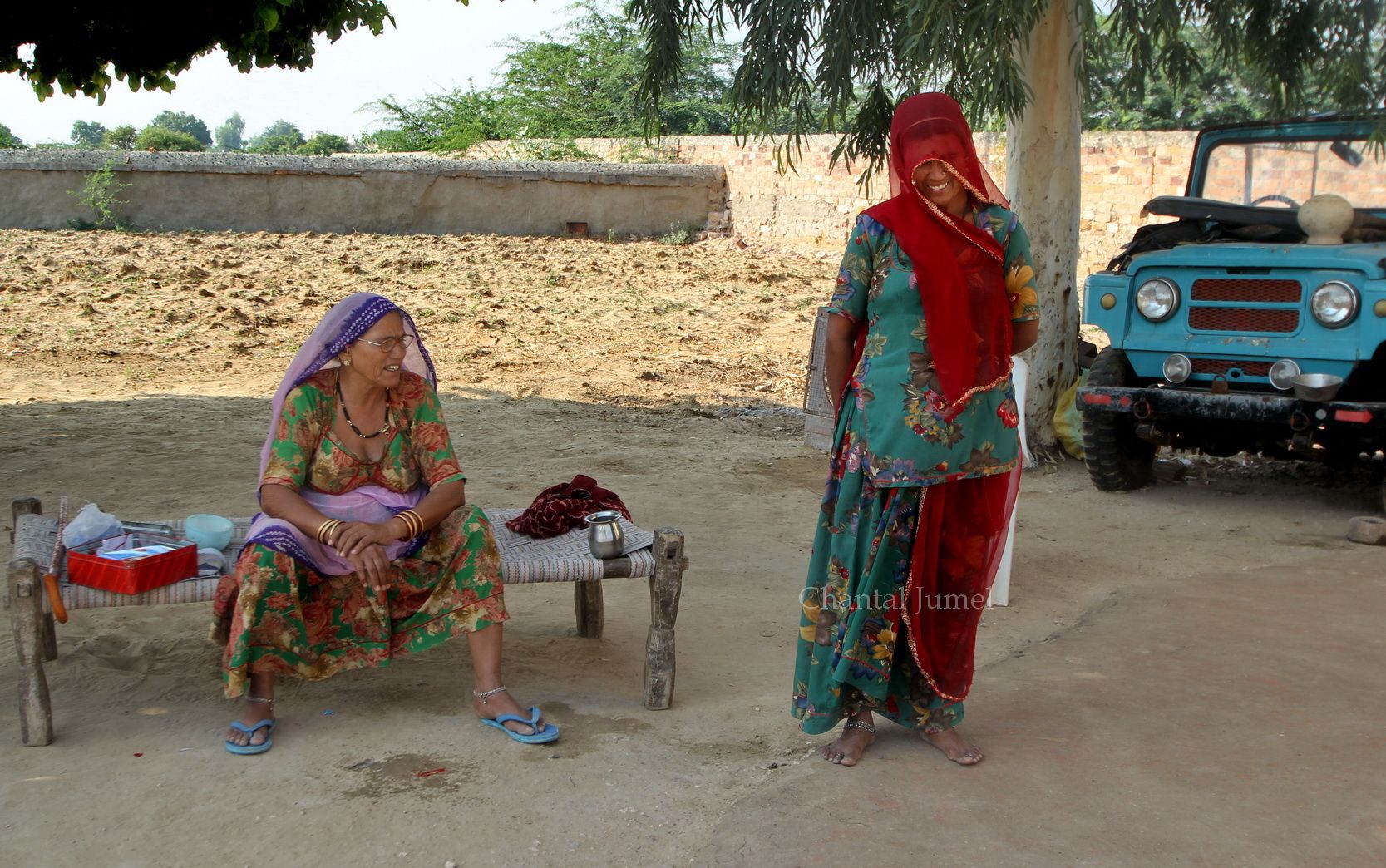


Diwali preparations began the previous day with the plastering of a large part of the house's yard with fine clay.
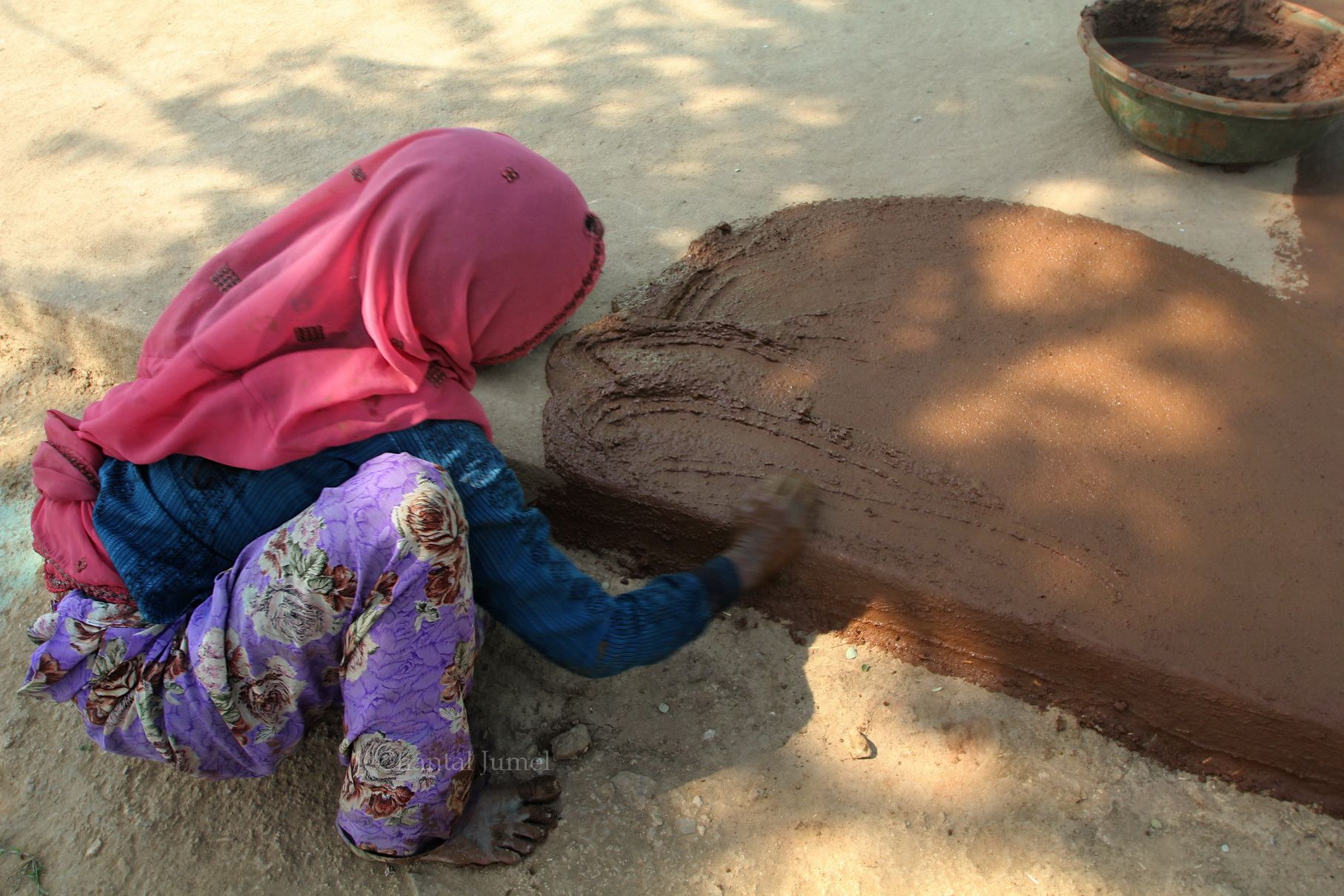
The festival of lights celebrates Lakshmi, the prosperity and abundance goddess and drives away her elder sister Alakshmi, who brings misfortune, strife and poverty. After a cup of tea and a few cookies, my hostesses make their way back to the house and soon return with earthen jars in which they mix two distinct powders with water. Red (gheru), is none other than iron oxide and white, slaked lime (chunna) or chalk (khadiya).
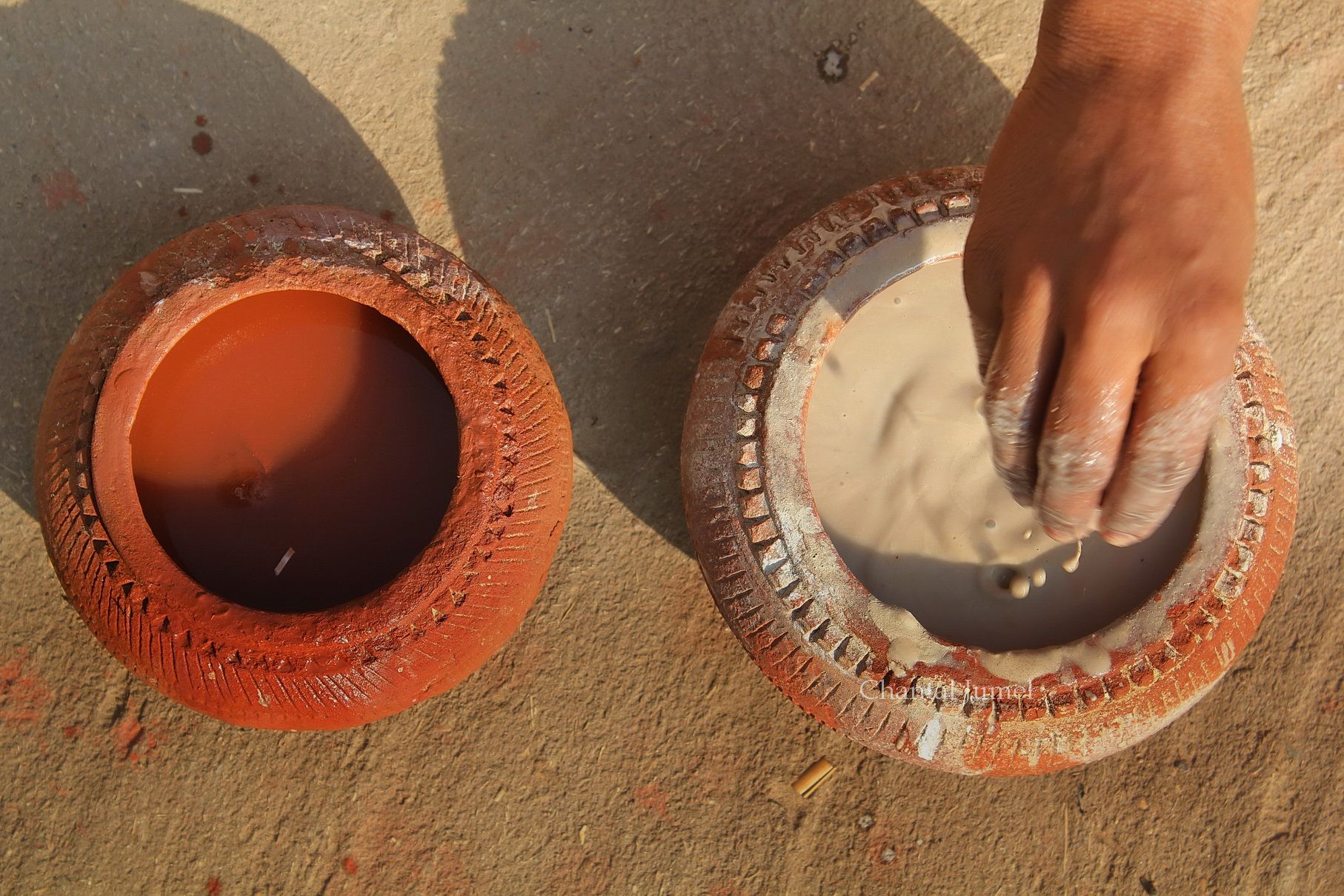
Painting a mandana
To draw a mandana, no brush is needed but a strip of sari rolled into a ball. It works as a reservoir of ink once it has been dipped in the chosen colour and pressed into the hollow of the fingers.
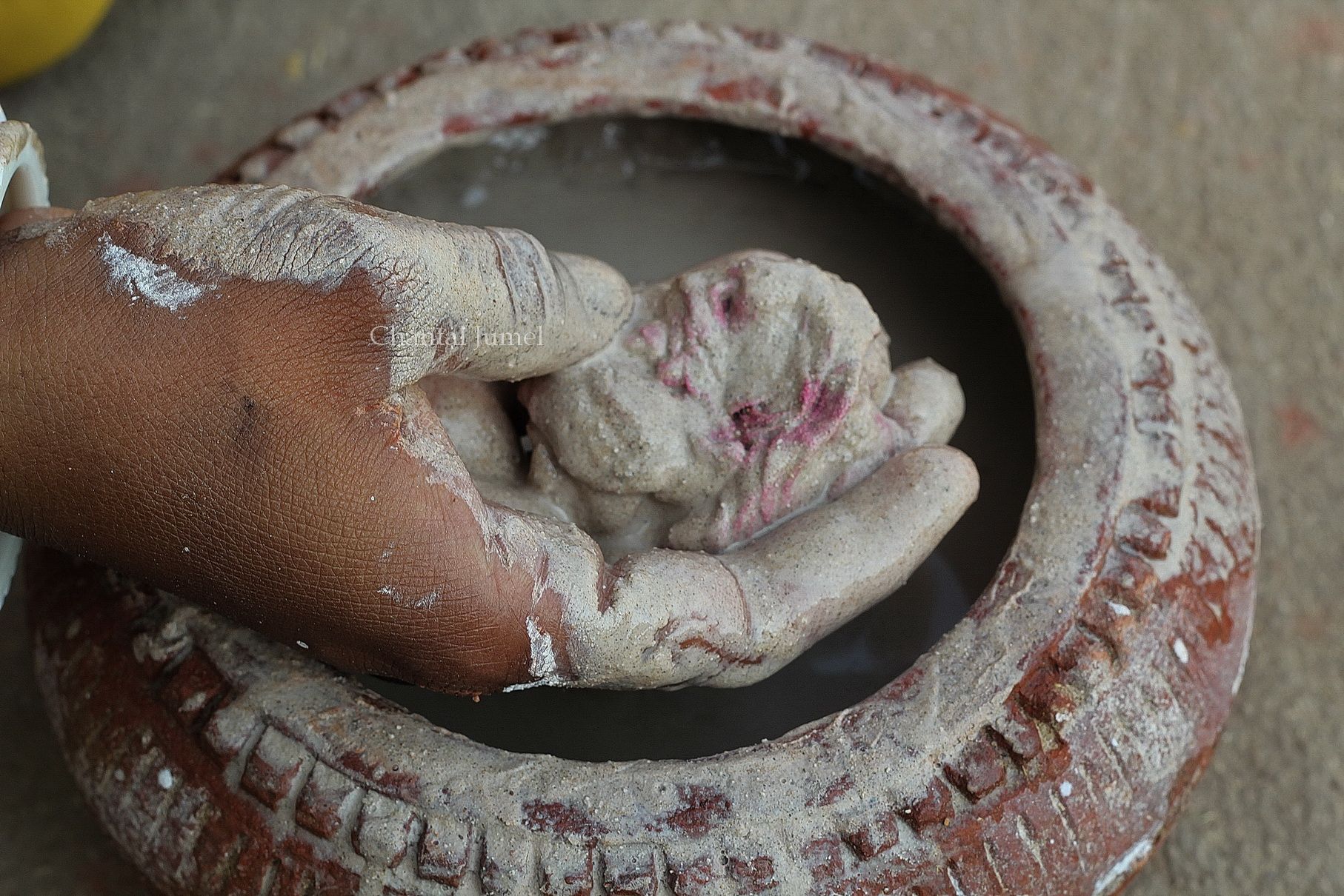
The young woman guides the red liquid and traces the outlines of the drawing. Similarly, she does the same with the white, which she uses to inscribe straight and curved parallel lines or repetitive or mirrored motifs within spaces. Drawing mandana is described as subhkarya (an auspicious activity) and emphasises the idea of centre, symmetry, and multiplication. Around a circle that exalts the syllable OM, I notice, in the direction of the cardinal points, the presence of four identical figures symbolising Goddess Lakshmi.
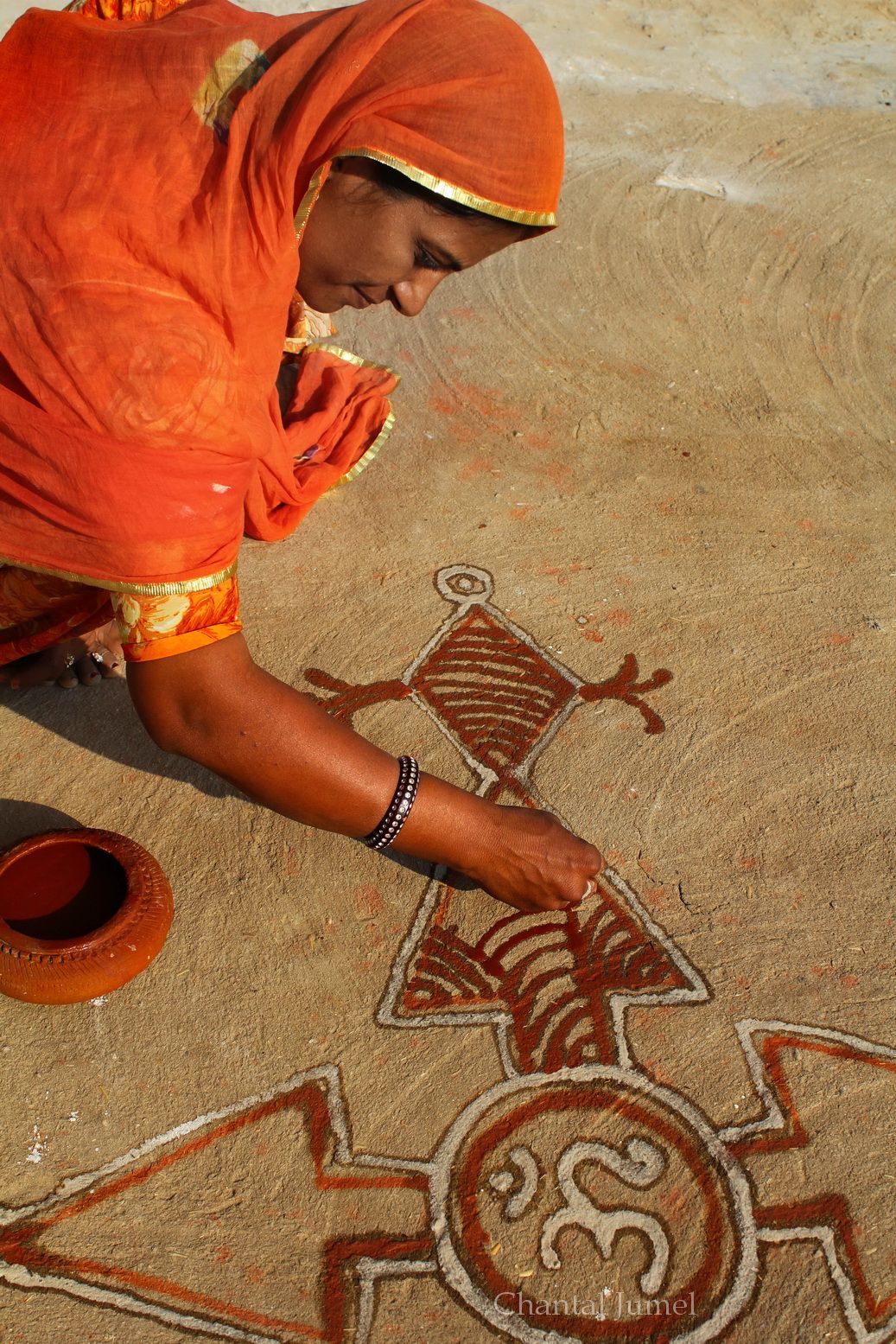
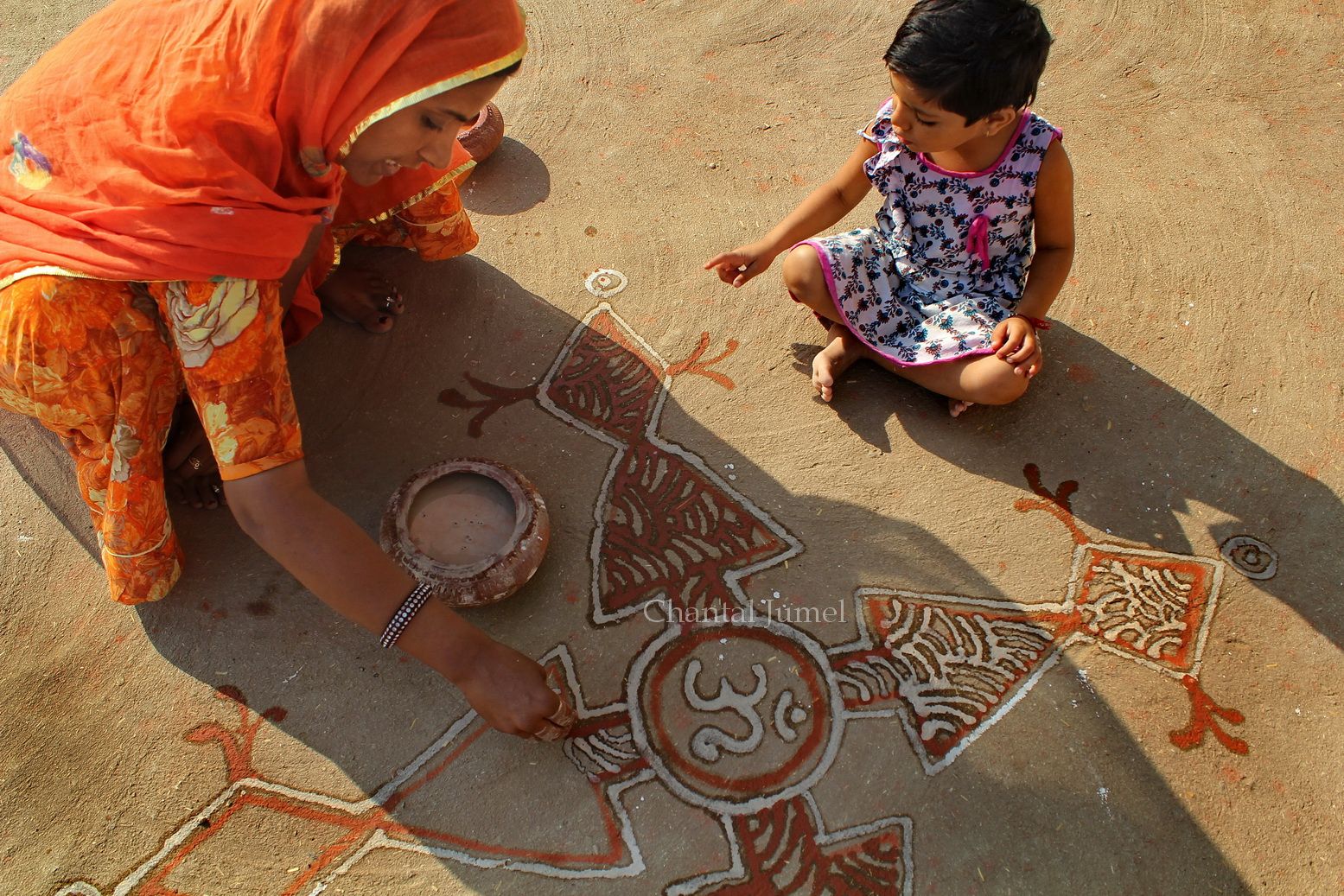
Heartened by my keen interest in their graphic works, the sister-in-law undertakes to draw a square to host a pair of stylised feet crowned by the sun and the moon. On each side of the square, I wonder what the rising arrowheads patterns stand for. However, they remind me of the Tuareg crosses worn by men and handed down from father to son with the aphorism: “My son, I give you the four directions of the world, for no one knows where you will die.” Is it the influence of the nearby desert that gives the mandana their resolutely geometrical and uncluttered appearance?


The morning continues with more drawings, and in a joint effort, the mother and the other young girls festoon the perimeter of the courtyard as they would the edges of a drapery.


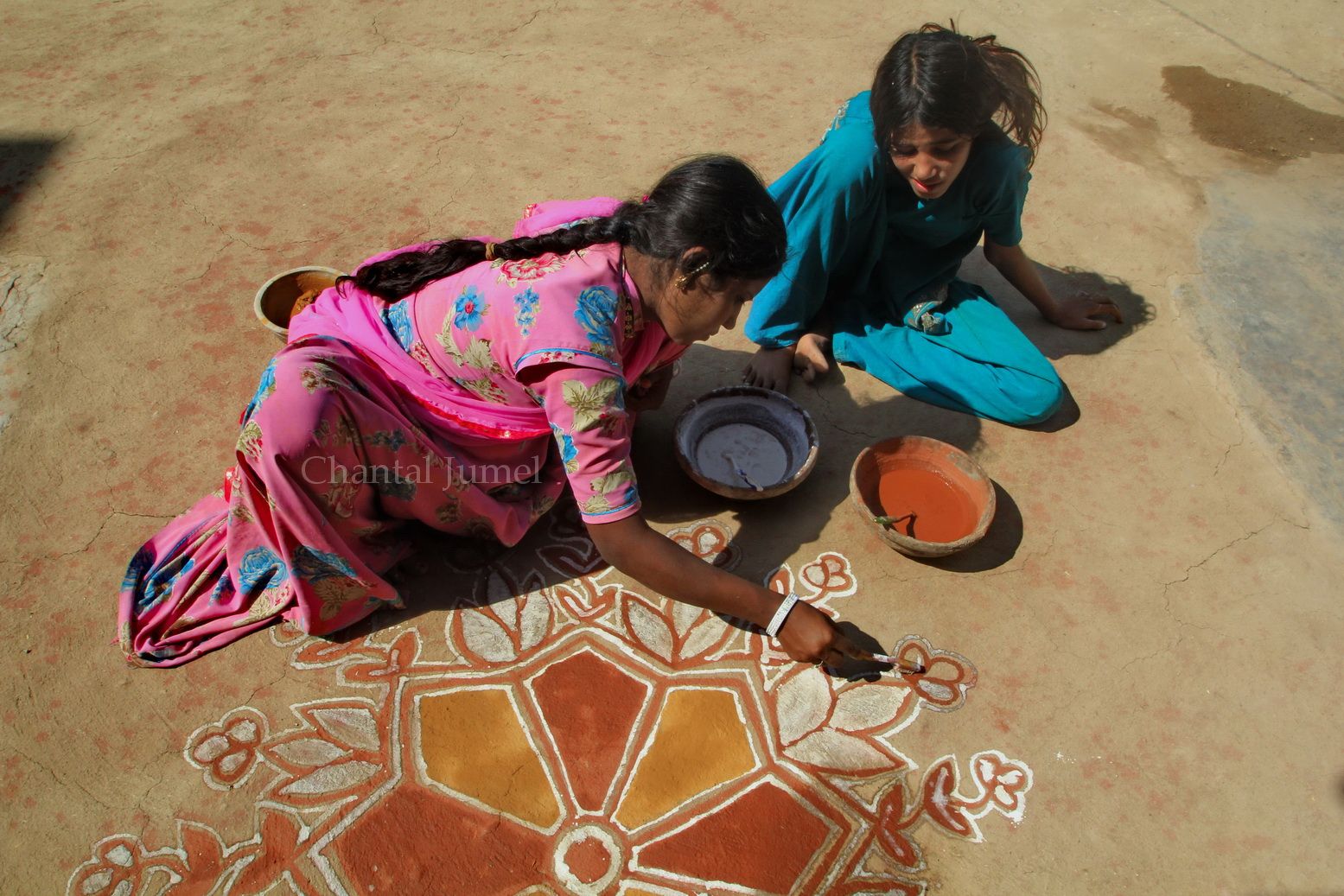
After a few days spent visiting other families, my stay comes to an end and I return to Jodhpur with a bag of the precious desert manna that I will cook on my return to France thanks to the recipe that revives the wild capers and beans that grow on the trees.
Story to be followed....

Film rushes from the film "Home": Flying above traditional rural houses in Jodhpur region and mandana paintings. Director Yann Arthus Bertrand, 2008

